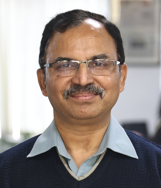
 Jitendra M Parmar
Jitendra M Parmar
On this Safer Internet Day, the world needs to unite against the fast-developing digital tools and protect children against threats that come with them. The Internet is a treasure trove of resources and information and also a landmine of abusers, pedophiles, and traffickers lurking from the various corners of the World Wide Web, looking for vulnerable young children. Being clueless and gullible, they are the easiest targets for all the predators.
With every technological advancement, the tools available to predators are also becoming more sophisticated, making children even more vulnerable to online abuse and exploitation. Artificial intelligence, while offering incredible benefits to society, has also opened a dark and dangerous pathway for those who are on the lookout to exploit children online. The ability to generate highly realistic child exploitative material using AI has drastically changed the entire landscape of online child abuse. These fabricated images and videos, which are disturbingly real, are flooding the internet.
The demand and supply are being fuelled while most of the world still struggles to catch up with the pace of technology.
A 2024 report by Childlight estimates that 300 million+ children under the age of 18 have been affected by online child sexual exploitation and abuse between June 2023 and May 2024. This means one case of online abuse is reported every second. This is a mere peripheral view of the enormity of the problem. Closer home with 884 million active Internet users, India become both a critical consumer and a provider of such material.
However, India demonstrated bold leadership in recognizing this truth and is at the forefront of combatting Child Sexual Exploitative and Abuse Material (CSEAM). In a landmark judgment in Just Rights for Children Alliance v. S Harish, the Supreme Court of India ruled that even accessing CSEAM online, regardless of storing or distributing the material, amounts to “constructive possession” of such content and is punishable under the POCSO Act.
This ruling broadens the understanding of what constitutes possession of child pornography, ensuring that individuals who access these materials are held accountable, even if they do not store, download, or distribute it. The Supreme Court has also ruled that the term Child Pornography would no longer be used, replacing it with Child Sexual Exploitation and Abuse Material (CSEAM).
This change is far more than symbolic. The term CSEAM leaves no room for ambiguity—it highlights that these materials are the result of a crime and an act of severe exploitation against children.
Recognizing this alarming trend, the United Kingdom and Australia too have taken crucial steps in the fight against CSEAM. While the UK has criminalized the creation and distribution of AI-generated CSEAM, acknowledging that these artificial images and videos are just as harmful as those created through direct abuse, Australia has restricted social media for children under the age of 16.
What India, the UK, and Australia have started set a precedent that the rest of the world urgently needs to follow. The challenge is immense because AI-generated content can be easily created, altered, and distributed anonymously. As new tools emerge powered by advanced machine learning and deepfake technology, the risk multiplies. What makes this issue even more pressing is its borderless nature. CSEAM is created, shared, and consumed across borders, carefully wrapped by the anonymity of the digital world. Tackling such crimes demands a borderless framework—a coordinated global response where nations share intelligence, resources, and strategies. Countries must adopt unified definitions, stronger international laws, and collaborative mechanisms to ensure the perpetrators cannot exploit legal loopholes across jurisdictions.
The ability to generate explicit images of children, even from innocent pictures posted on social media, is now a dangerous reality. Many unsuspecting parents share images of their children online, unaware that these can be manipulated using AI to create exploitative content. Recently, Mark Zuckerberg, CEO of Meta, shared a family photo but deliberately hid his children's faces—a telling sign of the growing concerns about digital privacy. If the very architects of the internet are taking such precautions, it speaks volumes about the threats that have emerged due to unregulated technological advancements. We have created a demon we can no longer control. So, the question remains: if tech leaders are wary, shouldn't we all be?
There is an urgent need for global action—not just in implementing strict laws but also in fostering awareness and prevention mechanisms.
Governments worldwide must recognize that the battle against child exploitation online is no longer just about monitoring illegal websites or shutting down trafficking networks; it is about staying ahead of emerging technologies that are dangerous weapons in the hands of predators. Countries must introduce and enforce stringent laws that criminalize AI-generated CSEAM, hold perpetrators accountable, and develop AI-driven solutions to detect and eliminate such content from the web. Tech companies must also take responsibility by implementing robust detection tools and ensuring their platforms do not become safe havens for child exploiters.
While legal action is necessary, education and digital literacy play a crucial role in protecting children. Parents, teachers, and caregivers must be equipped with knowledge about online risks, safe internet practices, and the potential dangers of AI-generated content. Children, too, must be taught the importance of privacy, the risks of oversharing, and how to seek help if they encounter inappropriate online content or individuals.
On this Safer Internet Day, we must recognize that technology is advancing at an unprecedented rate, and so are the threats that come with it. It is time the world understands and treats AI-generated child exploitative material with the same severity as any other form of child sexual abuse content. It is time for the world to act. Every nation must step up to ensure that legal frameworks, technological safeguards, and awareness campaigns evolve in tandem with these threats.
A child’s safety should never be at the mercy of technological advancements. The internet should be a place of learning, creativity, and connection—not a hunting ground for predators and child traffickers. As we move forward in this digital era, we must unite globally to build a safer internet where every child is protected and every offender is held accountable. The time to act is now.
The author is a communications professional
